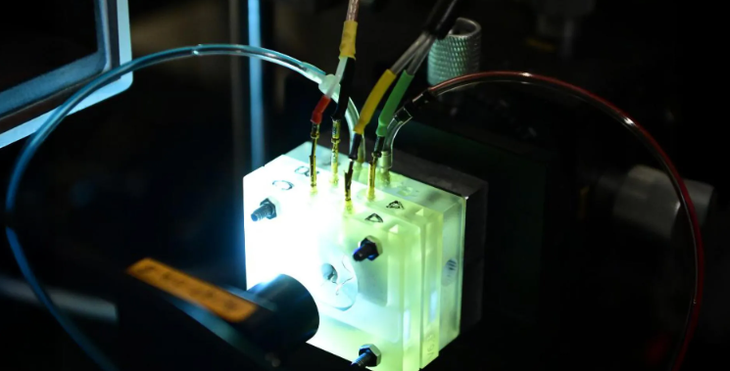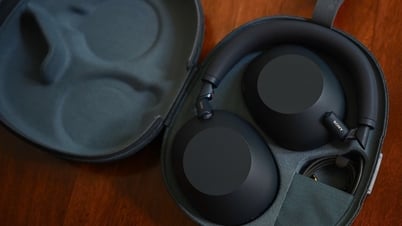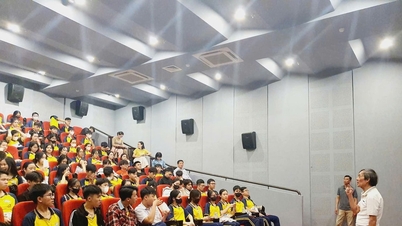
The achievement of growing the cochlea outside the body opens up opportunities for practical applications in medicine, especially in the treatment of hearing loss, a disease that affects hundreds of millions of people worldwide - Photo: Chris Taggart/Rockefeller University
Just before his death in August 2025, Professor A. James Hudspeth and his research team at the Sensory Neuroscience Laboratory at Rockefeller University (USA) achieved a historic breakthrough: keeping a slice of the cochlea alive and functioning outside the body.
According to ScienceDaily , this is the first time scientists have been able to directly observe the sophisticated biological mechanism that helps humans hear sound.
Using a special device that simulates the cochlea's natural habitat, the team recorded the organ's living biomechanics, including its extraordinary sensitivity, sharp frequency response, and wide range of sound intensity coding.
“We can now monitor the first steps of the hearing process under controlled conditions, something that has never been possible before,” said study co-author Dr. Francesco Gianoli.
This finding also confirms a biophysical principle that Hudspeth has been studying for more than 25 years: the phenomenon of “Hopf bifurcation,” a mechanical instability that allows a system to amplify extremely small signals into distinct oscillations.
If this principle had previously been demonstrated only in amphibians such as frogs, now, for the first time, it has been confirmed in the cochlea of mammals, which are closely related to humans.
To achieve this, the team used cochleae from gerbils, which have a similar hearing range to humans. Tiny slices of tissue, just 0.5 mm across, were placed in a chamber filled with a nutrient-rich solution that maintained the same temperature and voltage as their natural habitat.
When playing sound through a micro speaker, scientists observed the opening and closing of ion channels in the hair cell bundle and the process of outer hair cells contracting and stretching according to voltage changes, thereby amplifying the sound signal.
Hudspeth's longtime colleague, neurophysiologist Marcelo Magnasco, called the experiment “a masterpiece” and hailed it as one of the most impressive achievements in biophysics in the past five years.
This achievement is not only of academic value. It opens up opportunities for practical applications in medicine, especially in the treatment of hearing loss, a disease that affects hundreds of millions of people worldwide.
Scientists hope that cochlear slices grown outside the body will become a new tool for testing drugs, targeting specific cell types and understanding exactly when the auditory system is failing. This could lead to treatments for hearing restoration, for which there are no approved drugs, becoming a reality in the near future.
For Professor Hudspeth, who has spent more than half a century studying the mechanism of hearing, this is considered the “peak” of his career. For the scientific community, it is a turning point that opens a new door in conquering the secrets of hearing and brings hope to millions of people who have lost the sound of life.
Source: https://tuoitre.vn/lan-dau-tien-oc-tai-duoc-nuoi-song-ngoai-co-the-mo-hy-vong-chua-mat-thinh-luc-20250930163212485.htm



![[Photo] Binh Trieu 1 Bridge has been completed, raised by 1.1m, and will open to traffic at the end of November.](https://vphoto.vietnam.vn/thumb/1200x675/vietnam/resource/IMAGE/2025/10/2/a6549e2a3b5848a1ba76a1ded6141fae)



































































































Comment (0)